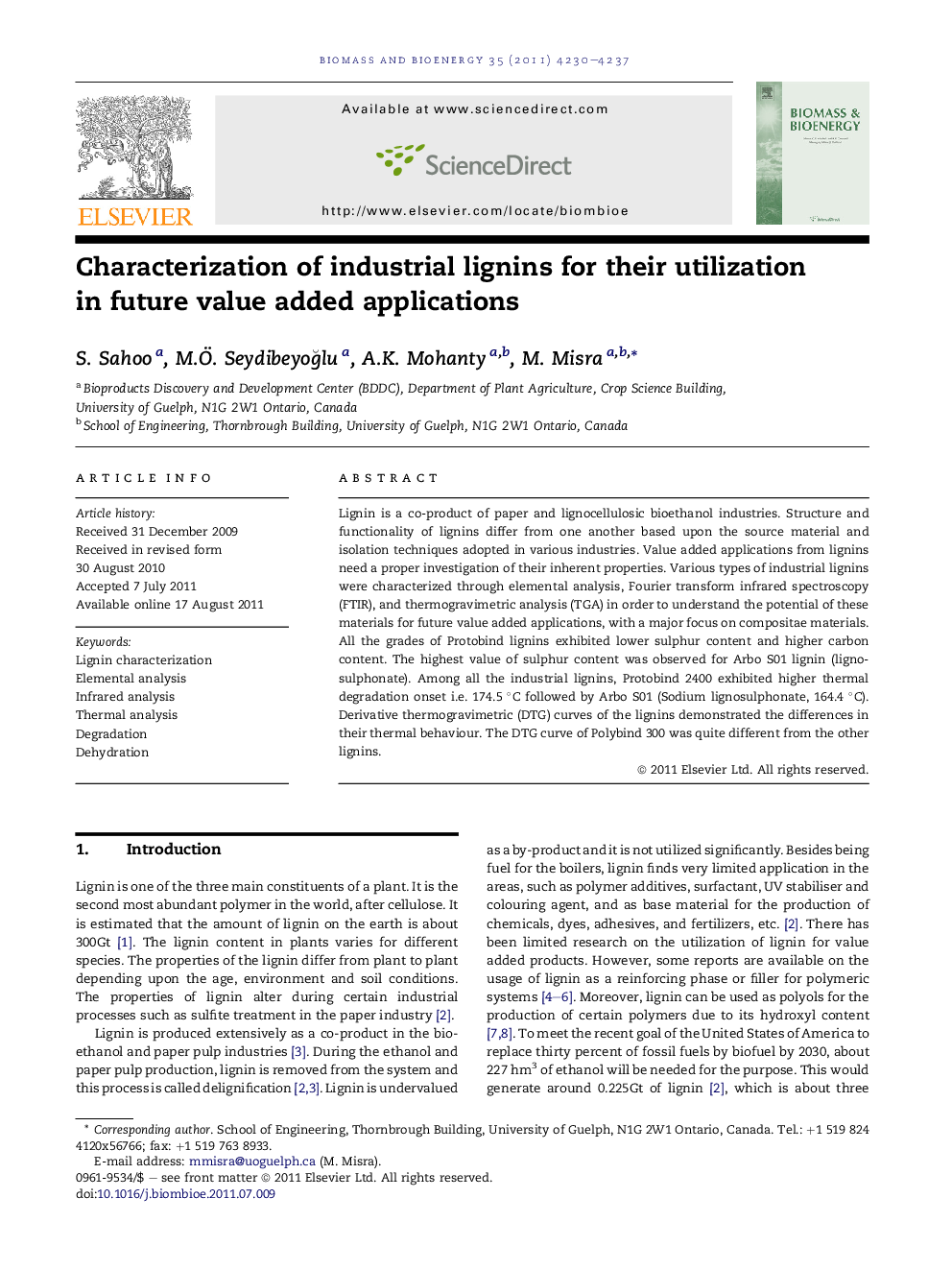| Article ID | Journal | Published Year | Pages | File Type |
|---|---|---|---|---|
| 677969 | Biomass and Bioenergy | 2011 | 8 Pages |
Lignin is a co-product of paper and lignocellulosic bioethanol industries. Structure and functionality of lignins differ from one another based upon the source material and isolation techniques adopted in various industries. Value added applications from lignins need a proper investigation of their inherent properties. Various types of industrial lignins were characterized through elemental analysis, Fourier transform infrared spectroscopy (FTIR), and thermogravimetric analysis (TGA) in order to understand the potential of these materials for future value added applications, with a major focus on compositae materials. All the grades of Protobind lignins exhibited lower sulphur content and higher carbon content. The highest value of sulphur content was observed for Arbo S01 lignin (lignosulphonate). Among all the industrial lignins, Protobind 2400 exhibited higher thermal degradation onset i.e. 174.5 °C followed by Arbo S01 (Sodium lignosulphonate, 164.4 °C). Derivative thermogravimetric (DTG) curves of the lignins demonstrated the differences in their thermal behaviour. The DTG curve of Polybind 300 was quite different from the other lignins.
► Lignin is a co-product of paper pulp and lignocellulosic bioethanol industries. ► Lignins differ in their elemental compositions. ► Protobind lignins contain lower amount of sulphur and higher amount of carbon. ► Lignins exhibited significant differences in their thermal degradation behaviours. ► Physico-chemical characteristics of lignin help deciding its applications.
